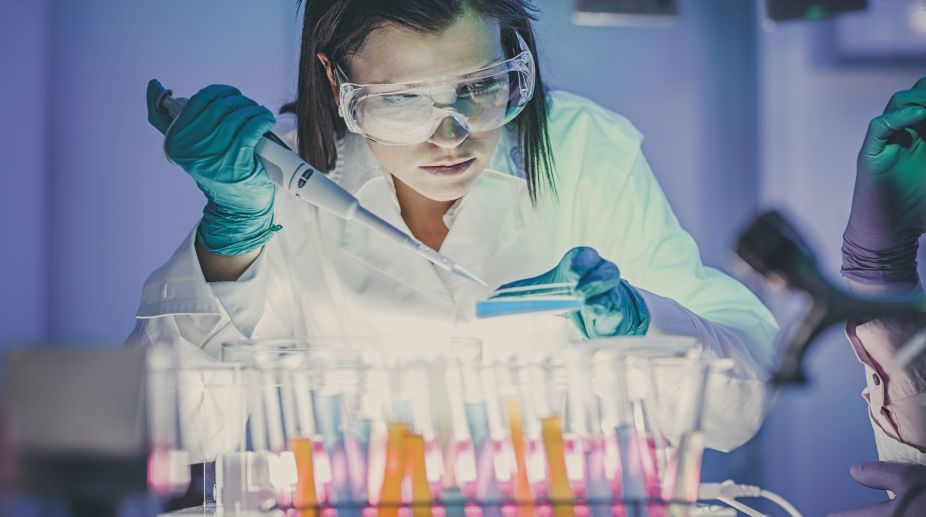Interactive protectors
Antigens induce an immune response in the body, especially the production of antibodies

PHOTO: Getty Images
Agglutinins are antibodies capable of clumping the corresponding microbes by producing visible conglomerates. The addition of the corresponding immune sera to a suspension of microbes provokes clumping of microbial cells in the form of flakes or granules. This phenomenon is known as agglutination. The agglutination reaction takes place on mixing erythrocytes, yeasts and other cells with the corresponding immune sera.
It was described by A Charrin and G Roger in 1889, and investigated in detail by M Gruber and H Durham in 1896. In the same year F Widal reported that the serum of typhoid patients was capable of specifically clumping (agg-lutinating) typhoid bacteria. Later it was established that in a whole series of infectious diseases, antibodies (agglutinins) are produced in the blood of patients, which are capable of clumping the corresponding causative agents of infectious diseases.
The agglutination reaction, like the flocculation and precipitin reactions, is under the control of the physicochemical conformities of the inter-relations of colloidal systems. The antibody (agglutinin) and antigen (agglutinogen) take part in the agglutination reaction. Their interaction takes place in definite quantitative proportions, and in the presence of an electrolyte (0.85 per cent NaCl solution). The agglutination reaction is characterised by specificity but group agglutination can be found in weaker serum dilutions.
Advertisement
The antigenic structure of bacteria is quite varied. In the same bacterial strain, there may be group, species, and type antigens. Similar bacteria are composed of various antigenic groups, and during immunisation of animals, the corresponding agglutinins are produced in the blood.
For revealing specific agglutinins in sera of animals immunised by a complex of antigens of the bacterial cell the method of adsorption of agglutinins is employed (Castellani’s exhaustion reaction). By adding certain species of bacteria to the serum of an immunised animal, in which there are several agglutinins, those which clump only organisms of this species are removed, after which the serum freed from these agglutinins is checked for the presence of other agglutinins by adding other species of bacteria.
The agglutination reaction is widely employed in the practice of serological diagnosis of enteric fever, paratyphoids A and B (Widal’s reaction), brucellosis (Wright’s reaction), typhus fever (reaction with Rickettsia prowazeki), tularaemia, leptospirosis and other diseases, in which with the help of known microbes (diagnosticums) the corresponding agglutinins are determined in a patient’s sera.
In surgical practice of blood transfusion the reaction of isohaem-agglutination has had wide application with the help of which blood groups may be determined. For this purpose it is necessary to have two haemoly tic sera (P and y) obtained from people with A and B blood groups. One or two drops of each of these sera are put separately on a slide or china dish, and one small drop of the blood under test is added. The blood and serum are carefully mixed and, according to the reaction of isohaem-agglutination, the blood group is established.
The writer is Associate Professor, Head, Department of Botany, Anand Mohan College, Kolkata, and also Fellow, Botanical Society of Bengal.
Advertisement